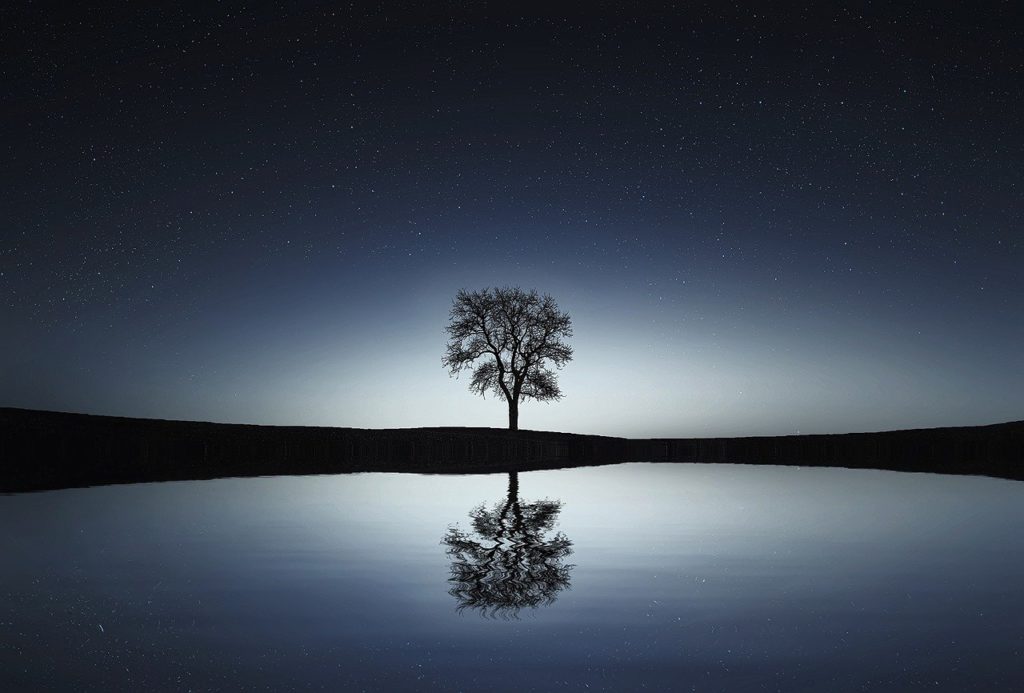Ugh, I know. This was the part of English class that was always the most frustrating and annoying. You’re reading a novel you were forced to read and aren’t connecting with, and a well-meaning teacher asks you to the dissect a moment within it. It’s a quiet moment away from the action of the story, something simple, like the protagonist walking across the room and stumbling over a copy of Shakespeare Complete Works. The teacher asks you “what is the significance of the character stumbling over that book?” and you can’t help but think to yourself in frustration maybe, just maybe, the book was the first thing the author saw on their shelf, and how am I supposed to read the writer’s mind anyway? While I can’t tell you how to read a writer’s mind, and would greatly advise you not to attempt putting words into any writer’s mouth, I can break down what a symbol is and how you can use them throughout your own work to try to get a better understanding.
What is a Symbol?

What is perhaps equally frustrating is when that same teacher asks you to write about the symbols, motifs, and themes of that novel. Don’t they all kind of feel like the same thing? Well, it’s sort of like the whole metaphor vs. simile thing. A simile is a metaphor, just a specific type of metaphor. Speaking of the metaphor, it’s important to acknowledge symbols and motifs as figurative images rather than a literal one. You may remember when I talked about the building blocks of poetry in this post here that I mention that imagery is the primary language of poetry, and doesn’t simply mean something that evokes sight, but all the five senses. Now, a literal image is just what it says on the tin: the image is exactly what it is. Shakespeare Complete Works is just a book. (Prentiss and Wilkins) A figurative image is where things start to get a little messy. They are “built using comparisons, either by metaphor or simile[.]” (Prentiss and Wilkins). In this case, tripping over Shakespeare Complete Works could mean a variety of things up to interpretation: perhaps this hypothetical protagonist struggles in understanding literature’s legacy, maybe they are an actor who is struggling to perform, or maybe it was one of the largest books on my bookcase when I started writing this post and something someone could realistically trip over.
This brings us back to the symbol. Most simply, the symbol is something that stands in for something else, but that doesn’t really get to the meat of things, does it? Erich Fromm suggests that there are three different types of symbols that are differentiated by what the specific connection between those symbols and what they represent: the conventional, the accidental, and the universal (Admin). The conventional symbol is, weirdly enough, the one that feels accidental. For example, there is no inherent relationship between the word “cat” and a feline, but English speakers have decided through consensus that “cat” represents a cat. The accidental symbol is similar to the conventional symbol in that there is no natural relationship between symbol and meaning, but the connection is created by individual experience. For me, I associate mangos with happiness because when I’ve attempted to use them in drinks or when I’ve ordered meals with them in it, it makes me feel better. This would be an accidental symbol. Finally, the universal symbol stands apart from the other types of symbols because there is a connection between the image and the meaning. Regardless of time and culture, everyone recognizes this symbol. The heart shape, while not fully looking like the organ it represents, stands in for love. “This is because universal symbols link the external world to the internal, sensory one. Emotional and sensory experiences endure. Stories heavy in universal symbolism also endure”, so when that teacher asked you about the significance of Shakespeare Complete Works, this is likely the type of symbol she was referring to (Lynley).
Now that we know what a symbol is, how are motifs and themes different from them? A motif is a symbol that is reoccurring throughout a text. They don’t necessarily need to be the exact same image, but if those images are related and go to “enhance or bring attention to an idea” (“Literary Terms: Symbol, Motif, Theme”), then you’ve found one of the text’s motifs. Theme is the big one: it is the overall message that a narrative might tell. Symbols and motifs should lead to understanding the themes you’re trying to portray (“Literary Terms: Symbol, Motif, Theme”). So, if in our hypothetical story, Shakespeare Complete Works only appears that one time in the narrative, it could be a literal image, but it goes without saying the specificity of mentioning that particular book would draw readers’ attention to it, and it could be a figurative image, a symbol. If Shakespeare Complete Works and other western canon writers keep popping up throughout the story, like if when our protagonist is offered a conventional job that’ll greatly impact his ability to pursue his artistic dreams, but will leave him financially stable, and John Milton’s Paradise Lost pops out on his bookcase to him or when upon first meeting his love interest in a coffee shop, they are reading Pablo Neruda’s Twenty Love Poems and a Song of Despair, you probably have stumbled on a motif. The theme then of this hypothetical story could very much be about recognizing the legacy of the western canon and using them as inspiration to pursue your own creative endeavours.
Where Do I Find Good Symbols?

In the case of trying to to use symbols in your nature writing, you’ve really hit the jackpot because history and culture is completely laden with elements of nature being used as symbols. Just to name a few off the top of my head, you have the wise owl and the sly fox, water representing cleansing and rebirth and fire repenting passion and anger, a red rose representing love and a daisy representing innocence.
Religious texts in particular are full of such symbols that will instantly connect with a large amount of readers. In Christianity alone, you have the tree of knowledge, the snake that represents the devil, and the garden of Eden representing paradise. That doesn’t mean you’re only stuck referencing contemporary or mainstream religions: consider ancient Greek, Norse, or other pantheons; consider folktales and fables, perhaps even consider pagan or wiccan symbolism, which is absolutely packed with nature symbols. That’s not to say you should use religious symbolism willy-nilly. If you want to incorporate potentially loaded symbolism, you will have to put the work in to try to better understand what the symbols in each religion may represent, especially if it is a religion you didn’t grow up with or understand. I’m not going to even poke at the concept of cultural appropriation here, but it is important from a writing standpoint that you don’t just use a symbol for a symbol’s sake, as it could show you as a ignorant or lazy writer. For example, one could look at how anime frequently uses symbolism associated with Catholicism despite the fact that a vast, vast majority of Japanese people aren’t Christian and even know or care about the religious set dressing they’re using. I’m not Catholic nor do a feel a deep connection to my Christian upbringing, so this type of thing does not offend me, but I could see how it might upset devout people. For a closer look at this phenomenon with examples, you can look at the TV Tropes article here. If you want to start looking into how plants in particular have been used as symbols in the past, there is Plant Lore, Legends, and Lyrics Embracing the Myths, Traditions, Superstitions, and Folklore of the Plant Kingdom by Richard Folkard on Project Gutenberg, Roy Vickery’s plant lore website, and Witchipedia’s (no, not a spelling error) correspondence tables. I will stress that all these places are a good place to start and I would look for other sources to confirm what they say before adding them to your own writings.
You’re not limited to religion by any stretch. As a writer or poet you’ve likely read a large amount of books. Like with my example with Shakespeare Complete Works , consider how you could use the symbolism employed by those writers and stories that have stood the test of time and are known by people who may have not read any of Shakespeare’s work and have no interest in doing so. Lines like “Shall I compare thee to a summer’s day?”; “All the world’s a stage, And all the men and women merely players”; and “Some are born great, some achieve greatness, and some have greatness thrust upon them” are cultural touchstones that you’ve likely heard before, even if you have never gone to a Shakespearean production. While perhaps not as well known a religious symbols, pulling on the history of literature and poetry is still fairly universal. It will be important in this case to recognize who your target audience may be. In North America and Europe it can be taken for granted that everyone is expected to know a figure like ol’ Will Shakespeare, but that isn’t necessarily the case everywhere.
Taking it a step farther, you don’t have to limit yourself to symbolism supported by cultural baggage. “Many authors use physical symbolism to describe metaphysical emotions” (MasterClass). Think about how the accidental breaking of a lover’s gift may represent the state of the lovers’ relationship, or how a character remarking that they see their surroundings with a lack of colour or vibrancy may be reflective of their mental or emotional state. As I said, you don’t need to rifle through the religion and literature of the world to find good symbols, but you will have to establish those symbols with thought, thinking about how they fit into the context of your piece overall.
OK, But Why Would I Use Symbols and How Would I Incorporate Them Into My Work?

Symbols in your prose and poetry may be a hard concept to fully wrap your head around, but it is truly a necessary part of becoming a better writer or poet. Most importantly, symbols will connect to the themes (MasterClass) and connect to those themes to add more depth in a more concise and effective way. Symbols can show emotion, represent a character’s goal, keep the forward momentum of a story’s pace (Chapman), all with showing a reader these themes without telling them directly (Guest Blogger). The fact the symbols are by definition images will force you to truly think about how you can apply imagery to your work and follow that tired, but true writing adage to “show, don’t tell.” Symbols can not only represent characters’ motivations and goals, but define them (MasterClass). Think about how the physical characteristics of a character, whether that be their appearance or dress could represent their personality or mental state. Symbols could also work as innuendo: concealing darker meanings without outwardly stating them (MasterClass). Weigh out how not only objects may represent these darker meanings, such as a overturned bottle of wine could represent a character’s drinking problem getting out of their control, but subjects as well. Regard how the actions, appearance, or personality of a child character may reflect on a parent character’s past actions or parenting style, and so on. Effective symbols won’t spell out their meaning to readers, forcing a discerning reader to reflect not only on the work, but how aspects of their own life might relate to that work The power of suggestion is a powerful one indeed (Chapman).
Having tackled why the use of symbols in your work is significant, how do you add these symbols into your work without them loudly announcing themselves to readers and smacking them in their faces and still have them make sense and be cohesive? MasterClass suggests a very simple way: focus on writing engaging characters and story first, and think about how one could add symbols to represent your themes on subsequent drafts (Masterclass), but really
There is no right way to symbolize. There are poor approaches, but there are no Symbol Police. You won’t get arrested for using or abusing a symbol. Experiment!
(Chapman)
wikiHow (yeah I know, not my best source, but stay with me) offers twelve different ways you can add symbolism to your work, including some I’ve already mentioned, such as using “physical objects as a metaphor for a intangible object” (wikiHow Staff). Becca Puglisi offers how symbolism can be used in five different ways: through small details, motifs, metaphors, universal symbols, or through buried Easter eggs such as characters’ names (Puglisi).
To end on a cliché, the world is truly your oyster when it comes to using symbolism, and it is up to you to take that grain of sand and refine it into a pearl. Or maybe you’re the grain of sand, refining your writer’s craft. Or maybe symbolism itself is the sand, or maybe…
Oh yeah, and May the Fourth be with you.
Works Cited
Admin. “symbol.” 11 December 2014. Erich Fromm online. Web. 28 January 2021.
Chapman, Harvey. “Symbolism: The Complete Guide.” n.d. Web. 28 January 2021.
Guest Blogger. “Why You Should Use Symbolism In Your Writing.” The Write Practice. n.d. Web 28 Jauary 2021.
“Literary Terms: Symbol, Motif, Theme.” The Masters Review Blog. 24 February (no year listed). Web. 28 January 2021.
Lynley. “The Three Types of Symbolism.” Slap Happy Larry. 28 September 2019. Web. 28 January 2021.
MasterClass. “Writing 101: What is Symbolism? Symbolism Definition and Examples in Literature.” 8 November 2020. Web. 28 January 2021.
Prentiss, Sean and Joe Wilkins. Enviromental and Nature Writing A Writer’s Guide and Anthology. London: Bloomsbury Academic, 2019. Print.
Puglisi, Becca. “5 Important Ways to Use Symbolism in Your Story.” 28 July 2014. Web. 28 January 2021.
wikiHow Staff. “How to Use Symbolism in Your Writing.” 22 January 2021. Web. 28 Janurary. 2021.
